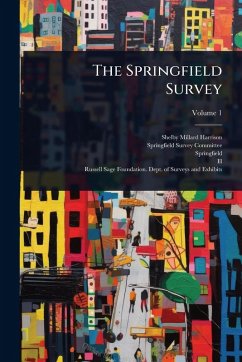
The Milk Problem in St. Louis / Prepared by Elizabeth Moore and Minnie D. Weiss Under the Direction of George B. Mangold
Versandkostenfrei!
Versandfertig in über 4 Wochen
14,99 €
inkl. MwSt.
Weitere Ausgaben:

PAYBACK Punkte
7 °P sammeln!
"The Milk Problem in St. Louis," originally published in 1911, offers a fascinating glimpse into the early 20th-century concerns surrounding milk quality and its impact on public health. Prepared by Elizabeth Moore and Minnie D. Weiss under the direction of George B. Mangold, this study provides valuable insights into the social and economic factors that influenced the milk supply in a major American city. The research, conducted by the St. Louis School of Social Economy's Department of Research, highlights the challenges faced in ensuring safe and nutritious milk for urban populations. This h...
"The Milk Problem in St. Louis," originally published in 1911, offers a fascinating glimpse into the early 20th-century concerns surrounding milk quality and its impact on public health. Prepared by Elizabeth Moore and Minnie D. Weiss under the direction of George B. Mangold, this study provides valuable insights into the social and economic factors that influenced the milk supply in a major American city. The research, conducted by the St. Louis School of Social Economy's Department of Research, highlights the challenges faced in ensuring safe and nutritious milk for urban populations. This historical document is a valuable resource for students and researchers interested in the history of public health, urban sociology, and the Progressive Era. Its detailed examination of the milk problem in St. Louis provides a unique case study for understanding the complexities of urban life and the ongoing efforts to improve the well-being of city dwellers. This work has been selected by scholars as being culturally important, and is part of the knowledge base of civilization as we know it. This work was reproduced from the original artifact, and remains as true to the original work as possible. Therefore, you will see the original copyright references, library stamps (as most of these works have been housed in our most important libraries around the world), and other notations in the work. This work is in the public domain in the United States of America, and possibly other nations. Within the United States, you may freely copy and distribute this work, as no entity (individual or corporate) has a copyright on the body of the work. As a reproduction of a historical artifact, this work may contain missing or blurred pages, poor pictures, errant marks, etc. Scholars believe, and we concur, that this work is important enough to be preserved, reproduced, and made generally available to the public. We appreciate your support of the preservation process, and thank you for being an important part of keeping this knowledge alive and relevant.







![Voyages of the Slavers St. John and Arms of Amsterdam, 1659, 1663 [microform]: Together With Additional Papers Illustrative of the Slave Trade Under t Cover Voyages of the Slavers St. John and Arms of Amsterdam, 1659, 1663 [microform]: Together With Additional Papers Illustrative of the Slave Trade Under t](https://bilder.buecher.de/produkte/66/66137/66137867n.jpg)




